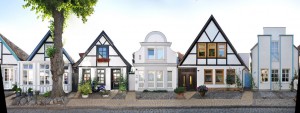Moscow [russian: Москва|Moskwa, german: Moskau], first mentioned in 1147, lies in the european part of Russia on the shores of the river Moskwa, it is the largest city in Russia and Europe (except Istanbul, which however lies partly in Asia), the 10th largest city in the world (2015) by population and the northernmost megacity in the world
Population: 12.198.000 (2015) | 8.967.000 (1989) | 3.641.000 (1936) | 1.175.000 (1900)
Moscow is the political and cultural centre of Russia. It is known worldwide for its political role, but also for its rich architecture, the Kremlin complex, the Moscow Metro and its arts for example. Three UNESCO world heritage sites are located within city limits, as well as europes highest skyscrapers. It hosted the Summer Olympics of 1980 which was boycotted by 65 countries for political reasons.
This linear panorama composition, photgraphed by Uwe Dietrich in july 2014, represents the northeastern side of the Red Square in Moscow, dominated by the department store complex GUM. Originally built as the „Upper Trading Rows“ between 1890 and 1893, the building extends for 250 metres along the square and was designed by Alexander Pomerantsev and Vladimir Shukhov. The name goes back to the time when there were extensive street market activities around the Red Square and this part was the higher lying area. After the Russian Revolution of 1917 the building lost its commercial status. Only after the death of Stalin it was reopened as GUM (literally meaning „main universal store“), quickly becoming the socialistic premium department store. After 1990 it was renovated again and reopened as Moscow’s first class luxury shopping temple.
Left of GUM we see the Kazan Cathedral („Cathedral of Our Lady of Kazan“), one of the most important russian-orthodox churches. It was built in 1636, but destroyed on order by Stalin in 1936. The restoration of the cathedral was undertaken in the early 1990s as the first church destroyed by communists to be rebuilt.
Click for larger view:
For classic view and more details visit the archive:





